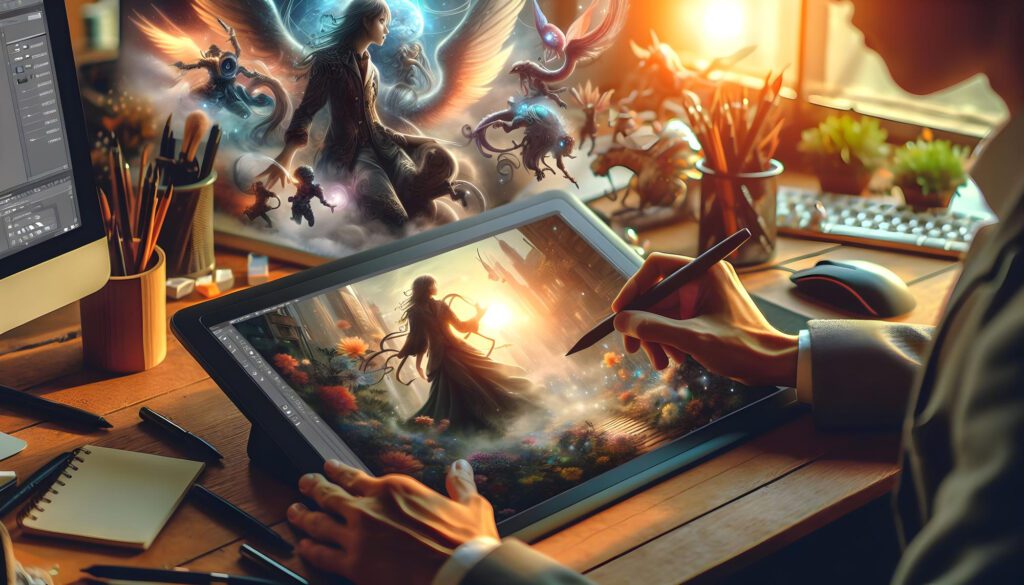Game design and development is a multifaceted discipline that marries creativity with technology, resulting in immersive experiences that captivate players worldwide. As the gaming industry continues to evolve, understanding the intricate balance between artistic vision and technical execution becomes paramount for developers. This article delves into the essential components of game design and development, exploring the methodologies, technologies, and creative processes that contribute to successful game creation.

The Foundations of Game Design
At its core, game design is about creating engaging experiences that resonate with players. This involves several key elements, including gameplay mechanics, narrative structure, visual aesthetics, and sound design. Each of these components must work in harmony to create a cohesive and enjoyable experience.
Gameplay Mechanics
Gameplay mechanics are the rules and systems that govern how players interact with a game. They can range from simple actions, such as jumping or shooting, to complex systems involving resource management or character progression. According to a study by the International Game Developers Association (IGDA) in 2021, 70% of game developers identified gameplay mechanics as the most critical aspect of game design (IGDA, 2021). A prime example of innovative gameplay mechanics can be found in “The Legend of Zelda: Breath of the Wild,” where players are encouraged to experiment with the environment, leading to unique solutions to challenges.
Narrative Structure
The narrative structure of a game is equally important, as it provides context and emotional depth to the gameplay experience. A well-crafted story can enhance player engagement and investment in the game world. Research by the University of Southern California’s Game Innovation Lab indicates that players are more likely to remember and enjoy games with strong narratives (USC, 2020). Titles like “The Last of Us” exemplify this, weaving a compelling story with rich character development that resonates with players on an emotional level.
Technological Innovations in Game Development
While creativity is essential, the technological aspects of game development cannot be overlooked. The tools and technologies used in game development have advanced significantly, enabling developers to create more complex and visually stunning games.
Game Engines
Game engines are the backbone of game development, providing the necessary framework for building games. Popular engines like Unity and Unreal Engine have democratized game development, allowing both indie developers and large studios to create high-quality games. According to a report by Newzoo, Unity holds a 45% market share among game engines, while Unreal Engine accounts for 13% (Newzoo, 2022). These engines offer powerful features such as real-time rendering, physics simulation, and cross-platform compatibility, which are crucial for modern game development.
Artificial Intelligence
Artificial intelligence (AI) plays a pivotal role in enhancing gameplay experiences. AI can be used to create dynamic and responsive non-player characters (NPCs), making the game world feel more alive. For instance, in “Middle-earth: Shadow of Mordor,” the Nemesis System utilizes AI to create unique interactions between the player and NPCs, resulting in a personalized gameplay experience. A study by the Entertainment Software Association (ESA) found that 60% of gamers believe that AI significantly enhances their gaming experience (ESA, 2021).
The Creative Process in Game Development
The creative process in game development is iterative and collaborative, often involving cross-disciplinary teams. Designers, artists, programmers, and sound engineers must work together to bring a game to life. This collaboration is essential for ensuring that all elements of the game align with the overall vision.
Prototyping and Playtesting
Prototyping is a critical phase in the game development process, allowing developers to test ideas and mechanics before full-scale production. Rapid prototyping techniques enable teams to create playable versions of their games quickly, facilitating early feedback and iteration. According to a survey by Gamasutra, 75% of developers reported that playtesting significantly improved their game’s quality (Gamasutra, 2021). This feedback loop is vital for identifying issues and refining gameplay mechanics, ensuring that the final product meets player expectations.
Art and Sound Design
Art and sound design are integral to creating an immersive gaming experience. Visual aesthetics set the tone and atmosphere of a game, while sound design enhances emotional engagement. Research from the University of Utah indicates that sound can influence player behavior and decision-making, with 80% of players stating that sound design impacts their overall enjoyment of a game (University of Utah, 2020). Games like “Journey” exemplify the power of art and sound, using minimalist visuals and an evocative score to create a profound emotional experience.

Market Trends and Player Engagement
Understanding market trends is crucial for game developers aiming to create successful titles. The gaming industry has seen exponential growth, with global revenues projected to reach $218.7 billion by 2024 (Newzoo, 2023). This growth is driven by factors such as the rise of mobile gaming, the popularity of esports, and the increasing demand for immersive experiences through virtual reality (VR) and augmented reality (AR).
Player Engagement Strategies
Engaging players is essential for the longevity of a game. Developers are increasingly utilizing data analytics to understand player behavior and preferences. By analyzing metrics such as player retention rates and in-game spending, developers can tailor their games to better meet player expectations. A report by Statista indicates that 70% of gamers prefer games that offer regular updates and new content (Statista, 2022). This trend highlights the importance of ongoing support and community engagement in maintaining player interest.
Conclusion
In conclusion, game design and development is a complex interplay of creativity and technology. Successful games are the result of meticulous planning, innovative gameplay mechanics, compelling narratives, and cutting-edge technology. As the industry continues to evolve, developers must remain adaptable, leveraging new tools and methodologies to create engaging experiences that resonate with players. By understanding the foundations of game design, embracing technological innovations, and prioritizing player engagement, developers can navigate the ever-changing landscape of the gaming industry.
Key takeaways include the importance of gameplay mechanics and narrative structure, the role of technology in enhancing game development, and the necessity of collaboration and player engagement strategies. As the gaming industry grows, the perfect blend of creativity and technology will remain essential for creating memorable gaming experiences.
FAQ
What are the key components of game design?
The key components of game design include gameplay mechanics, narrative structure, visual aesthetics, and sound design. Each element must work together to create an engaging experience for players.
How important is technology in game development?
Technology is crucial in game development as it provides the tools and frameworks necessary for creating complex and visually stunning games. Game engines, AI, and data analytics play significant roles in modern game development.
What role does player feedback play in game development?
Player feedback is vital for improving game quality. Prototyping and playtesting allow developers to gather insights from players, leading to refinements in gameplay mechanics and overall design.
How can developers keep players engaged over time?
Developers can keep players engaged by offering regular updates, new content, and utilizing data analytics to understand player preferences. Community engagement is also essential for maintaining interest in a game.

